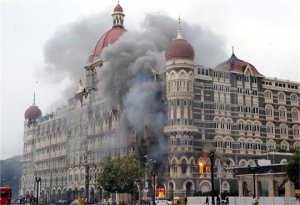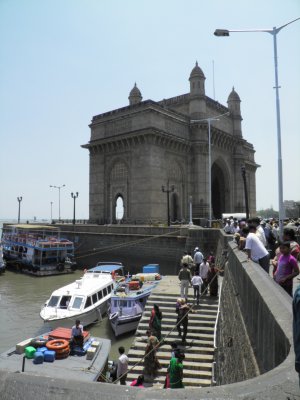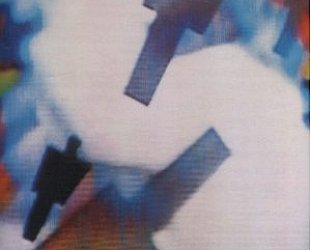Graham Reid | | 3 min read

In many places – notably around the higher end hotels which accommodate foreign tourists, and at popular attractions – Mumbai is a city on lazy high alert.
The apparent languor and good humour of many security guards and police doesn’t change the fact most are armed with seriously powerful weapons, stand before impassable barricades and usher people through scanners for an x-ray of bags and laptops.
The mirror searches under cars or a look beneath the bonnet may appear perfunctory, but they remind you that this city of around 20 million – still widely known as Bombay by locals, despite the name change almost two decades ago – has been in the sight-lines of terrorism.
In November 2008 Mumbai exploded onto the headlines for all the wrong reasons.
On one day terrorists from Pakistan hit more than half a dozen locations around the city including the iconic central railway station, popular Leopold Café on busy Colaba Causeway Rd, the Oberoi Trident Hotel and the Metro Cinema.
The abiding image on the nightly news and illustrating front page stories was of the smoldering dome of the stately and luxurious Taj Mahal Palace, a swanky hotel opposite the famous Gateway of India.
 The
Taj was hit by six explosions, one in the spacious lobby, and the
stand-off lasted three days until Indian security forces stormed the
place, killed the remaining attackers and rescued the hostages. The
sole surviving terrorist – one of the gunmen at the railway station
– was executed a year ago and there have been trials of
co-conspirators in Pakistan and the US.
The
Taj was hit by six explosions, one in the spacious lobby, and the
stand-off lasted three days until Indian security forces stormed the
place, killed the remaining attackers and rescued the hostages. The
sole surviving terrorist – one of the gunmen at the railway station
– was executed a year ago and there have been trials of
co-conspirators in Pakistan and the US.
It might seem ghoulish to visit a place where the names of those killed are engraved on a wall beside the waterfall fountain outside the far end of the lobby, but because the owner of the Taj, Ratan Tata, vowed afterwards to rebuild it even better then you are allowed to be curious.
Of course, you can't exactly amble through the suites designed by the likes of Piero Lissoni or sun yourself poolside unless you are a paying guest (and believe me you pay, room rates start near the top of the dome and go up into the stratosphere).
But you can enjoy the broad, low lobby which oozes opulence with its muted gold, glass top tables and an ambience of assured money. This is the smart-casual world, and sometimes even just casual-casual because if you're staying here you've got it and don't have to flaunt it. Although some do, of course.
 You
could slip in for a drink in the Harbour Bar which is open to the
public and from where you can view the ferries on the Arabian Sea.
Across the road is the impressive Gateway of India which was
completed in 1924 and through which the last British troops to leave
– and was also where the four gunmen who invaded the Taj arrived
from Pakistan by boat.
You
could slip in for a drink in the Harbour Bar which is open to the
public and from where you can view the ferries on the Arabian Sea.
Across the road is the impressive Gateway of India which was
completed in 1924 and through which the last British troops to leave
– and was also where the four gunmen who invaded the Taj arrived
from Pakistan by boat.
Sit here and choose from the extensive list of beverages. A bottle of beer averages 400 rupees which is a very reasonable NZ$8 given your surroundings and the generous amount of peanuts and nibbles which come with it.
Just briefly you can pretend that, given other choices in life, you could be one of those guests like the Hollywood and Bollywood stars, presidents and monarchs, writers such as V.S. Naipaul, the rather drawn and uncomfortable-looking John and Yoko, the late Ravi Shankar, the last Shah of Iran and others whose photos appear in cabinets in the corridor.
I'm guessing a main at one of the restaurants – like the renovated Wasabi on the first floor which was destroyed in the 2008 attack – would cost more than my room at the YMCA (NZ$48) in a quiet tree-lined street not four minutes walk away.
But that's not the point.
The Taj Mahal Palace, which opened its doors to the powerful and privileged 110 years ago, is about the good life. And – given that the Oberoi, railway station, Leopold and other places are as busy as ever after those horrific attacks – perhaps further proof that living well is the best revenge?
So when you walk past those guards, don't feel guilty for just being there to look around.
Others, just over six years ago, went to the Taj Mahal Palace with a much worse purpose.





post a comment